Impact Assessment of Waste Odor Source Locations on Pedestrian-Level Exposure Risk
Abstract
:1. Introduction
2. Methodology
2.1. Turbulence Modeling Approach
2.2. Case Descriptions
2.2.1. Validation Description
2.2.2. Test Case Description
2.2.3. Pollutant Exposure Risk Assessment
2.3. Boundary Conditions and Numerical Methods
3. Results and Discussion
3.1. CFD Validation
3.2. Pedestrian-Level Mean Flow Field
3.3. Influence of Source Locations on Concentration Distribution and Exposure Risk
3.3.1. Concentration Distribution of H2S at Pedestrian Level
3.3.2. Personal Intake Fraction with Different Source Locations
4. Conclusions
- The simulation results of the wind velocity and pollutant concentration distribution show good agreement with the experimental results, indicating that the RNG k-ε model and used numerical methods are appropriate to predict the diffusion of garbage odor in the residential area.
- High wind speed zones appear on both sides of windward side of the building array. Meanwhile, the buildings show a wind breaking effect, and there are obvious recirculating zones on the leeward side of the building array.
- The exposure risk of residents in the residential area is easily affected by the location of the waste collection point. When the waste collection point is located in the middle of the array’s periphery or between the two adjacent buildings in the center of the building array, outdoor residents are at greater risk of exposure to odors, and the average dimensionless concentration value of H2S and the personal intake fraction in the pedestrian-level area are one and three orders of magnitude higher than when the waste collection point is located in the corner of the array’s periphery.
- It is recommended to arrange the waste collection point in the corner of the building array’s periphery, not in the middle of the building array’s periphery or between the two adjacent buildings in the center of the array to reduce the exposure risks.
Author Contributions
Funding
Institutional Review Board Statement
Informed Consent Statement
Data Availability Statement
Conflicts of Interest
Nomenclature
| c1 | empirical constant |
| c2 | empirical constant |
| Cμ | model constant |
| Clocal | measured concentration (ppm) |
| Csource | source concentration (ppm) |
| H | building height (m) |
| k | turbulent kinetic energy (m2/s2) |
| Kc | non-dimensional concentration |
| Qsource | flow rate of the source emission (m3/s) |
| Sct | turbulent Schmidt number |
| U | wind velocity (m/s) |
| u* | friction velocity (m/s) |
| y+ | dimensionless wall distance |
| z0 | roughness height (m) |
| Uref | reference wind speed (m/s) |
| P_IF | personal intake fraction |
| ui | velocity component |
| p | pressure (Pa) |
References
- Zhang, J.; Zhang, F.; Gou, Z.; Liu, J. Assessment of macroclimate and microclimate effects on outdoor thermal comfort via artificial neural network models. Urban Clim. 2022, 42, 101134. [Google Scholar] [CrossRef]
- Liu, J.; Jiao, J.; Xie, Y.; Xu, Y.; Lin, B. Assessment on the expectation for outdoor usage and its influencing factors. Urban Clim. 2022, 42, 101132. [Google Scholar] [CrossRef]
- Ai, Z.T.; Mak, C.M. From street canyon microclimate to indoor environmental quality in naturally ventilated urban buildings: Issues and possibilities for improvement. Build. Environ. 2015, 94, 489–503. [Google Scholar] [CrossRef]
- He, L.; Hang, J.; Wang, X.; Lin, B.; Li, X.; Lan, G. Numerical investigations of flow and passive pollutant exposure in high-rise deep street canyons with various street aspect ratios and viaduct settings. Sci. Total Environ. 2017, 584-585, 189–206. [Google Scholar] [CrossRef] [PubMed]
- Adamek, K.; Vasan, N.; Elshaer, A.; English, E.; Bitsuamlak, G. Pedestrian level wind assessment through city development: A study of the financial district in Toronto. Sustain. Cities Soc. 2017, 35, 178–190. [Google Scholar] [CrossRef]
- Mittal, H.; Sharma, A.; Gairola, A. Numerical simulation of pedestrian level wind flow around buildings: Effect of corner modification and orientation. J. Build. Eng. 2019, 22, 314–326. [Google Scholar] [CrossRef]
- Hong, B.; Lin, B. Numerical studies of the outdoor wind environment and thermal comfort at pedestrian level in housing blocks with different building layout patterns and trees arrangement. Renew. Energy 2015, 73, 18–27. [Google Scholar] [CrossRef]
- Tsang, C.W.; Kwok, K.C.S.; Hitchcock, P.A. Wind tunnel study of pedestrian level wind environment around tall buildings: Effects of building dimensions, separation and podium. Build. Environ. 2012, 49, 167–181. [Google Scholar] [CrossRef]
- Zhang, X.; Weerasuriya, A.U.; Zhang, X.; Tse, K.T.; Lu, B.; Li, C.Y.; Liu, C.H. Pedestrian wind comfort near a super-tall building with various configurations in an urban-like setting. Build. Simul. 2020, 13, 1385–1408. [Google Scholar] [CrossRef]
- Liu, J.; Niu, J.; Mak, C.M.; Xia, Q. Detached eddy simulation of pedestrian-level wind and gust around an elevated building. Build. Environ. 2017, 125, 168–179. [Google Scholar] [CrossRef]
- Liu, J.; Zhang, X.; Niu, J.; Tse, K.T. Pedestrian-level wind and gust around buildings with a ‘lift-up’ design: Assessment of influence from surrounding buildings by adopting LES. Build. Simul. 2019, 12, 1107–1118. [Google Scholar] [CrossRef]
- Ma, T.; Xie, X.; Hang, J.; Chen, X.; Xia, X.; Xia, Y. Numerical Study of Inter-unit Dispersion of Pollutant in Single-sided Naturally Ventilated Buildings among Ideal Street Canyon. Build. Sci. 2020, 36, 105–113. [Google Scholar]
- Sha, C.; Wang, X.; Lin, Y.; Fan, Y.; Chen, X.; Hang, J. The impact of urban open space and ‘lift-up’ building design on building intake fraction and daily pollutant exposure in idealized urban models. Sci. Total Environ. 2018, 633, 1314–1328. [Google Scholar] [CrossRef]
- Ming, T.; Han, H.; Zhao, Z.; de Richter, R.; Wu, Y.; Li, W.; Wong, N.H. Field synergy analysis of pollutant dispersion in street canyons and its optimization by adding wind catchers. Build. Simul. 2020, 14, 391–405. [Google Scholar] [CrossRef]
- Jiang, G.; Yoshie, R. Side ratio effects on flow and pollutant dispersion around an isolated high-rise building in a turbulent boundary layer. Build. Environ. 2020, 180, 107078. [Google Scholar] [CrossRef]
- Zhang, Y.; Ou, C.; Chen, L.; Wu, L.; Liu, J.; Wang, X.; Lin, H.; Gao, P.; Hang, J. Numerical studies of passive and reactive pollutant dispersion in high-density urban models with various building densities and height variations. Build. Environ. 2020, 177, 106916. [Google Scholar] [CrossRef]
- Cui, D.; Li, X.; Liu, J.; Yuan, L.; Mak, C.M.; Fan, Y.; Kwok, K. Effects of building layouts and envelope features on wind flow and pollutant exposure in height-asymmetric street canyons. Build. Environ. 2021, 205, 108177. [Google Scholar] [CrossRef]
- Keshavarzian, E.; Jin, R.; Dong, K.; Kwok, K.C.S. Effect of building cross-section shape on air pollutant dispersion around buildings. Build. Environ. 2021, 197, 107861. [Google Scholar] [CrossRef]
- Keshavarzian, E.; Jin, R.; Dong, K.; Kwok, K.C.S.; Zhang, Y.; Zhao, M. Effect of pollutant source location on air pollutant dispersion around a high-rise building. Appl. Math. Model. 2020, 81, 582–602. [Google Scholar] [CrossRef]
- Reiminger, N.; Vazquez, J.; Blond, N.; Dufresne, M.; Wertel, J. CFD evaluation of mean pollutant concentration variations in step-down street canyons. J. Wind Eng. Ind. Aerodyn. 2020, 196, 104032. [Google Scholar] [CrossRef]
- Rafailidis, S. Influence of building areal density and roof shape on the wind characteristics above a town. Bound.-Layer Meteorol. 1997, 85, 255–271. [Google Scholar] [CrossRef]
- Ghobadi, P.; Nasrollahi, N. Assessment of pollutant dispersion in deep street canyons under different source positions: Numerical simulation. Urban Clim. 2021, 40, 101027. [Google Scholar] [CrossRef]
- Zhao, S.; Yang, H.; Li, C.; Obadi, I.; Wang, F.; Lei, W.; Xu, T.; Weng, M. Numerical investigation on fire-induced indoor and outdoor air pollutant dispersion in an idealized urban street canyon. Build. Simul. 2021, 15, 597–614. [Google Scholar] [CrossRef]
- Rong, S.; Wang, P. Simulation of Wind Direction on Numerical Diffusion Particles in Street Canyons Based on DPM Model. Environ. Sci. Technol. 2016, 39, 38–42. [Google Scholar]
- Shi, T.; Ming, T.; Wu, Y.; Peng, C.; Fang, Y.; de Richter, R. The effect of exhaust emissions from a group of moving vehicles on pollutant dispersion in the street canyons. Build. Environ. 2020, 181, 107120. [Google Scholar] [CrossRef]
- Zhou, X.; Ying, A.; Cong, B.; Kikumoto, H.; Ooka, R.; Kang, L.; Hu, H. Large eddy simulation of the effect of unstable thermal stratification on airflow and pollutant dispersion around a rectangular building. J. Wind Eng. Ind. Aerodyn. 2021, 211, 104526. [Google Scholar] [CrossRef]
- Ma, H.; Zhou, X.; Tominaga, Y.; Gu, M. CFD simulation of flow fields and pollutant dispersion around a cubic building considering the effect of plume buoyancies. Build. Environ. 2022, 208, 108640. [Google Scholar] [CrossRef]
- Tominaga, Y.; Stathopoulos, T. Numerical simulation of dispersion around an isolated cubic building: Comparison of various types of k–ε models. Atmos. Environ. 2009, 43, 3200–3210. [Google Scholar] [CrossRef]
- Hosseinzadeh, A.; Keshmiri, A. Computational Simulation of Wind Microclimate in Complex Urban Models and Mitigation Using Trees. Buildings 2021, 11, 112. [Google Scholar] [CrossRef]
- Tominaga, Y.; Stathopoulos, T. CFD Modeling of Pollution Dispersion in Building Array: Evaluation of turbulent scalar flux modeling in RANS model using LES results. J. Wind Eng. Ind. Aerodyn. 2012, 104–106, 484–491. [Google Scholar] [CrossRef] [Green Version]
- Liu, J.; Niu, J.; Du, Y.; Mak, C.M.; Zhang, Y. LES for pedestrian level wind around an idealized building array—Assessment of sensitivity to influencing parameters. Sustain. Cities Soc. 2019, 44, 406–415. [Google Scholar] [CrossRef]
- Toparlar, Y.; Blocken, B.; Maiheu, B.; van Heijst, G.J.F. A review on the CFD analysis of urban microclimate. Renew. Sustain. Energy Rev. 2017, 80, 1613–1640. [Google Scholar] [CrossRef]
- Jutta, G.; Nazim, U.S.M. Household waste and health risks affecting waste pickers and the environment in low- and middle-income countries. Int. J. Occup. Environ. Health 2017, 23, 299–310. [Google Scholar]
- Domingo, J.L.; Rovira, J.; Vilavert, L.; Nadal, M.; Figueras, M.J.; Schuhmacher, M. Health risks for the population living in the vicinity of an Integrated Waste Management Facility: Screening environmental pollutants. Sci. Total Environ. 2015, 518–519, 363–370. [Google Scholar] [CrossRef] [PubMed]
- Li, G.; Sun, H.; Zhang, Z.; An, T.; Hu, J. Distribution profile, health risk and elimination of model atmospheric SVOCs associated with a typical municipal garbage compressing station in Guangzhou, South China. Atmos. Environ. 2013, 76, 173–180. [Google Scholar] [CrossRef]
- Dincer, F.; Odabasi, M.; Muezzinoglu, A. Chemical characterization of odorous gases at a landfill site by gas chromatography–mass spectrometry. J. Chromatogr. A 2006, 1122, 222–229. [Google Scholar] [CrossRef]
- Sadowska-Rociek, A.; Kurdziel, M.; Szczepaniec-Cieciak, E.; Riesenmey, C.; Vaillant, H.; Batton-Hubert, M.; Piejko, K. Analysis of odorous compounds at municipal landfill sites. Waste Manag. Res. 2009, 27, 966–975. [Google Scholar] [CrossRef]
- Wu, C.; Liu, J.; Zhao, P.; Li, W.; Yan, L.; Piringer, M.; Schauberger, G. Evaluation of the chemical composition and correlation between the calculated and measured odour concentration of odorous gases from a landfill in Beijing, China. Atmos. Environ. 2017, 164, 337–347. [Google Scholar] [CrossRef]
- Colón, J.; Alvarez, C.; Vinot, M.; Lafuente, F.J.; Ponsá, S.; Sánchez, A.; Gabriel, D. Characterization of odorous compounds and odor load in indoor air of modern complex MBT facilities. Chem. Eng. J. 2017, 313, 1311–1319. [Google Scholar] [CrossRef] [Green Version]
- Papurello, D. Direct injection mass spectrometry technique for the odorant losses at ppb(v) level from nalophan™ sampling bags. Int. J. Mass Spectrom. 2019, 436, 137–146. [Google Scholar] [CrossRef]
- Leitl, B.; Schatzmann, M. Cedval at Hamburg University. Available online: https://mi-pub.cen.uni-hamburg.de/index.php?id=432 (accessed on 18 April 2022).
- Tominaga, Y.; Mochida, A.; Yoshie, R.; Kataoka, H.; Nozu, T.; Yoshikawa, M.; Shirasawa, T. AIJ guidelines for practical applications of CFD to pedestrian wind environment around buildings. J. Wind Eng. Ind. Aerodyn. 2008, 96, 1749–1761. [Google Scholar] [CrossRef]
- He, H.R.; Tang, Y.C. Research on bin design and locating place of ordinary residential area. Shanxi Archit. 2016, 42, 197–198. [Google Scholar]
- Qiang, N.; Wang, H.Y.; Zhao, A.H.; Yuan, W.X.; Tai, J.; Chen, M. Odor emission rate of municipal solid waste from landfill working area. Build. Sci. 2014, 35, 513–519. [Google Scholar]
- Luo, Z.; Li, Y.; Nazaroff, W.W. Intake fraction of nonreactive motor vehicle exhaust in Hong Kong. Atmos. Environ. 2010, 44, 1913–1918. [Google Scholar] [CrossRef]
- Hang, J.; Xian, Z.; Wang, D.; Mak, C.M.; Wang, B.; Fan, Y. The impacts of viaduct settings and street aspect ratios on personal intake fraction in three-dimensional urban-like geometries. Build. Environ. 2018, 143, 138–162. [Google Scholar] [CrossRef]
- Lin, Y.; Chen, G.; Chen, T.; Luo, Z.; Yuan, C.; Gao, P.; Hang, J. The influence of advertisement boards, street and source layouts on CO dispersion and building intake fraction in three-dimensional urban-like models. Build. Environ. 2019, 150, 297–321. [Google Scholar] [CrossRef]
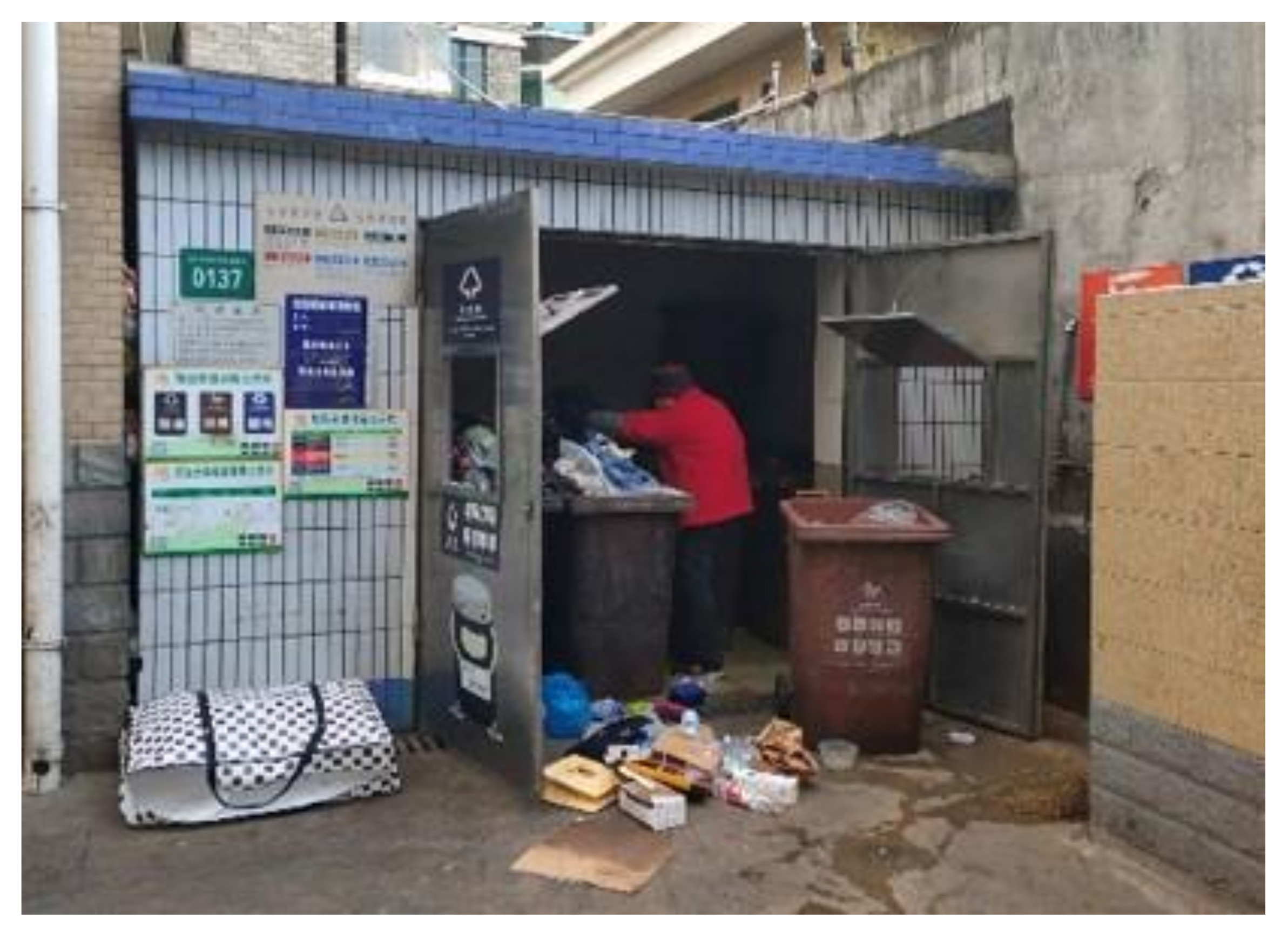

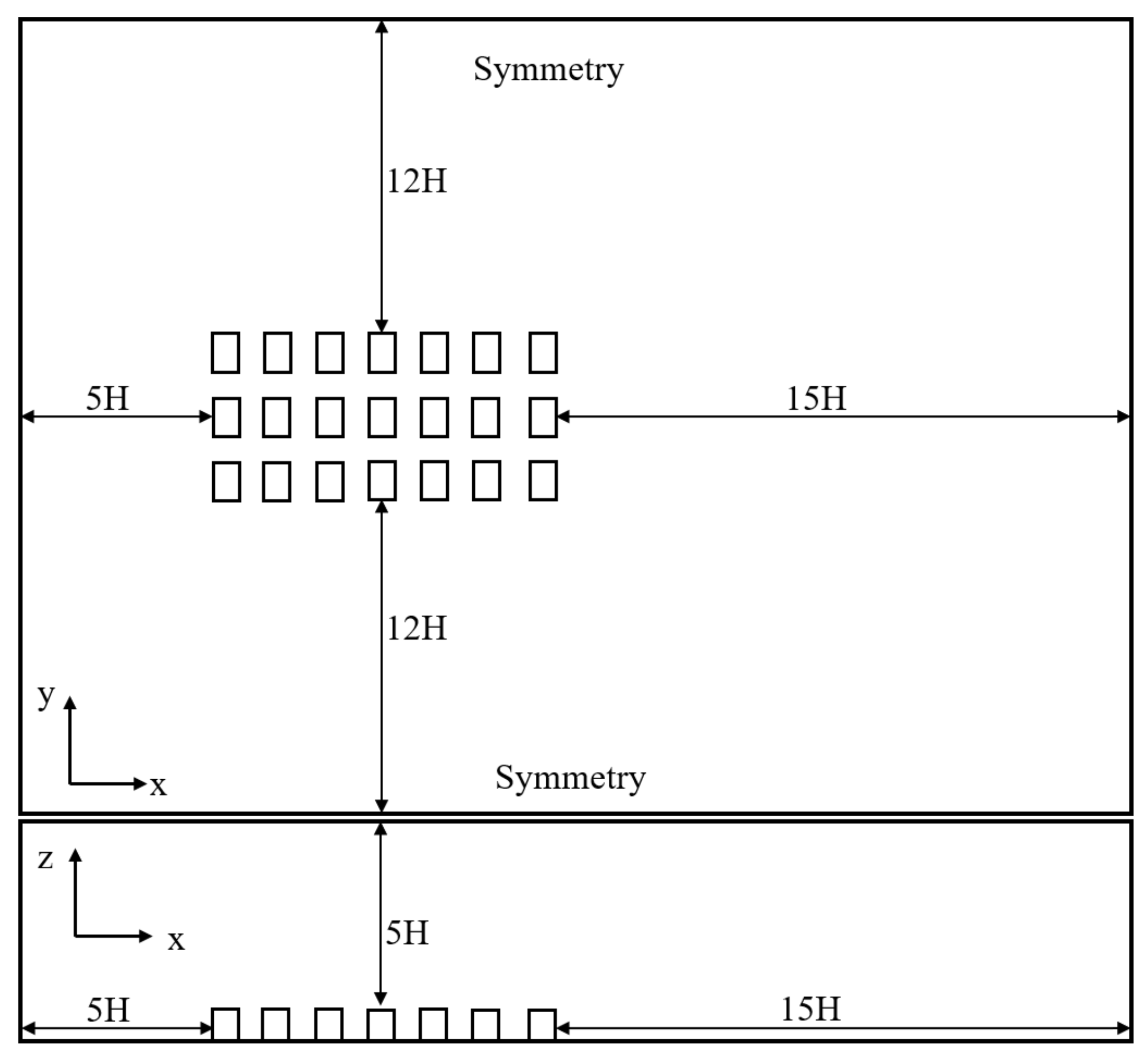
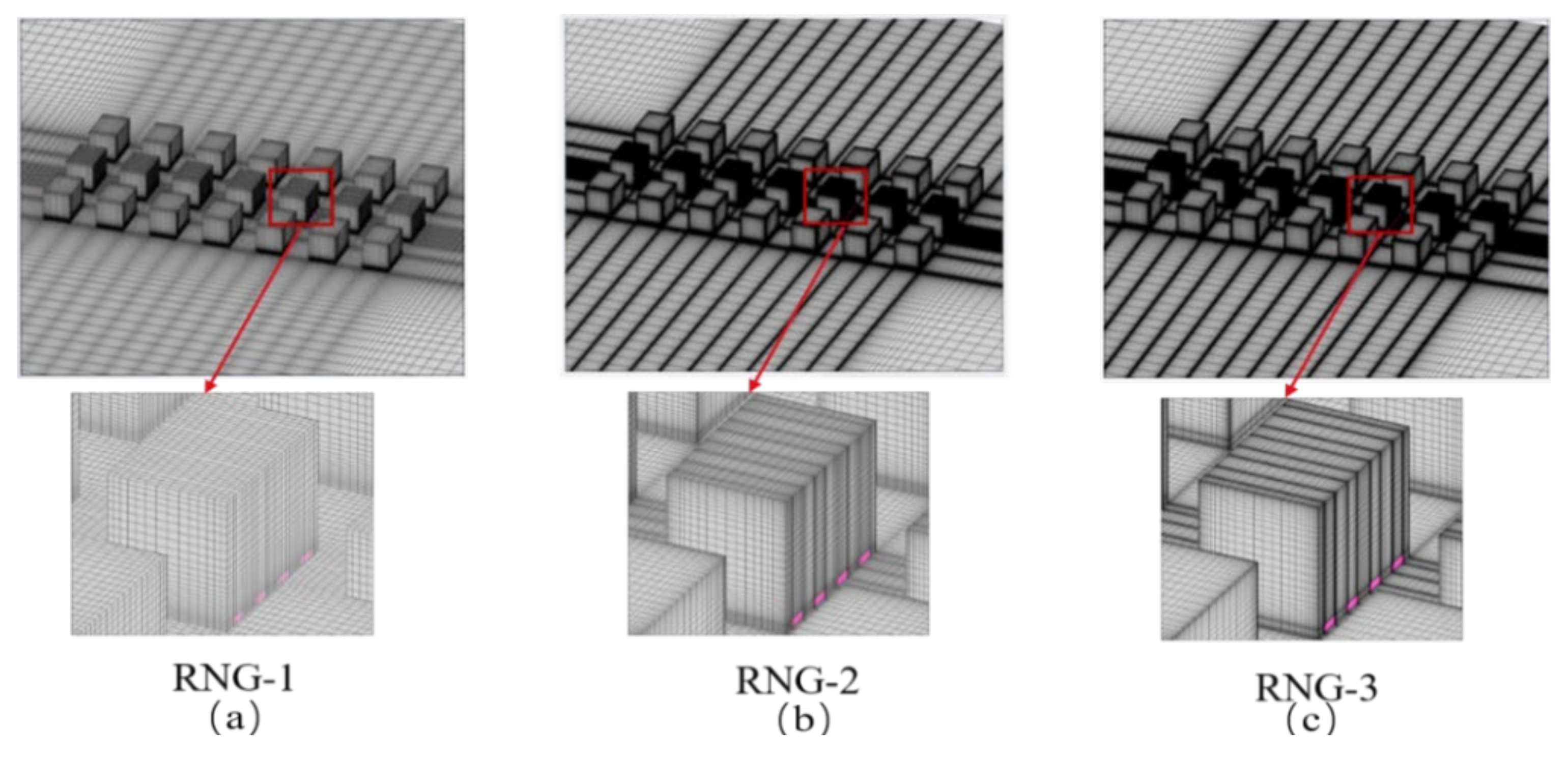
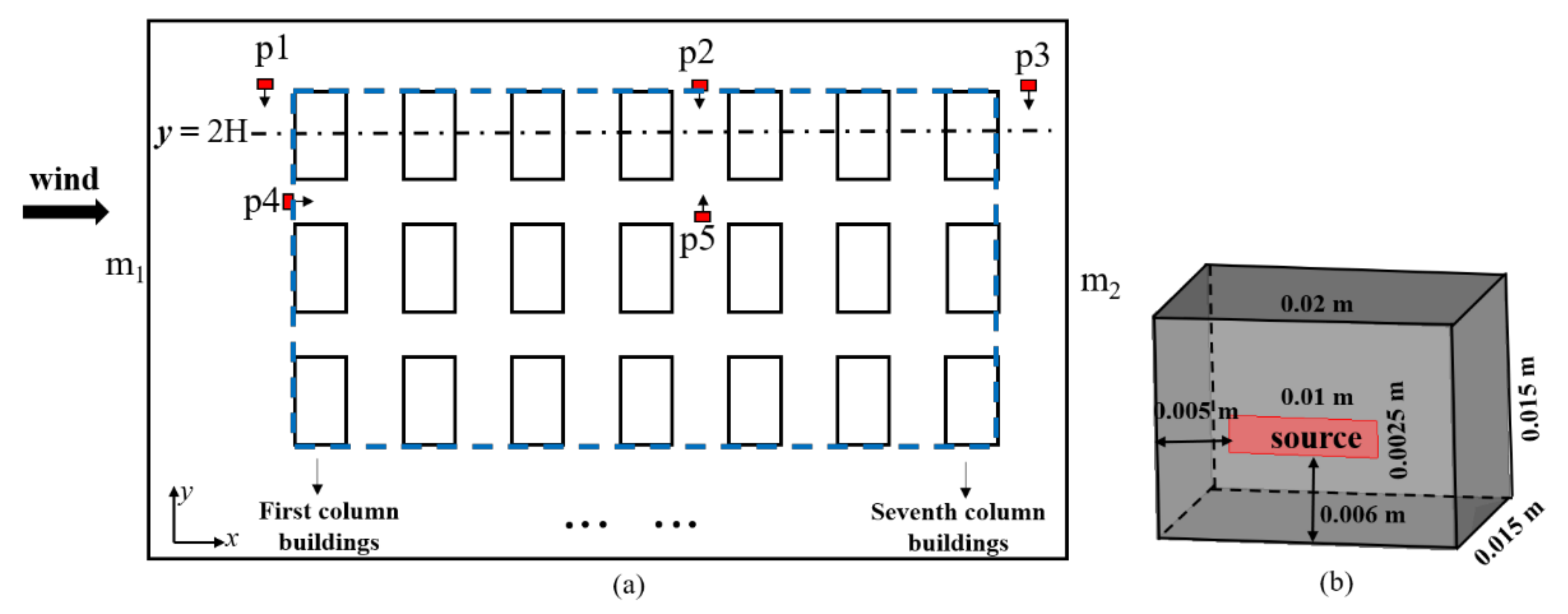
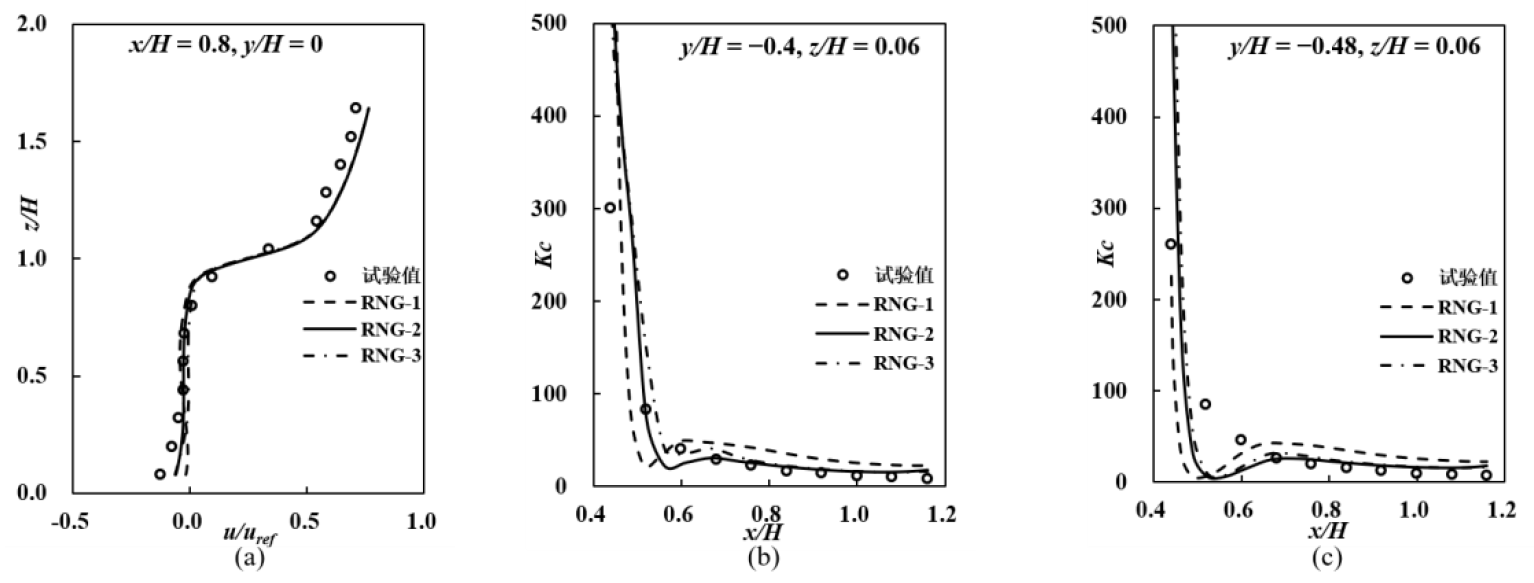
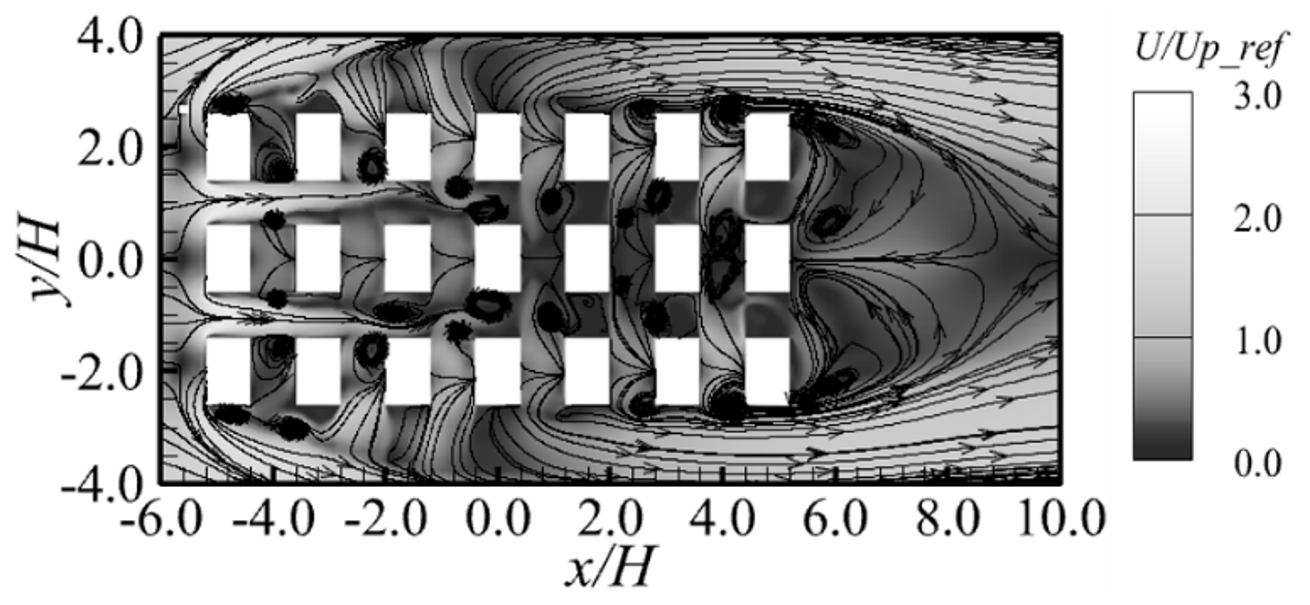
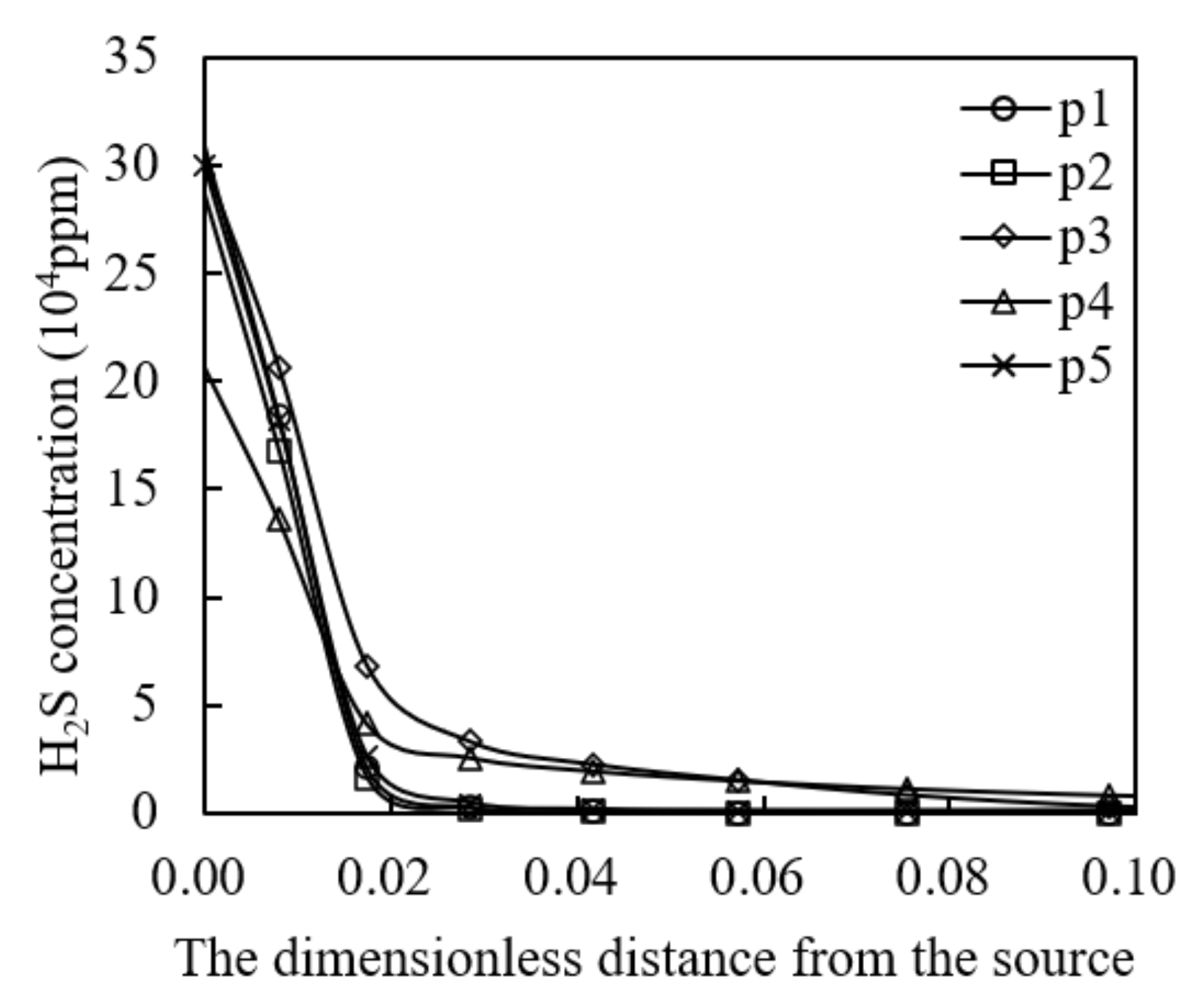
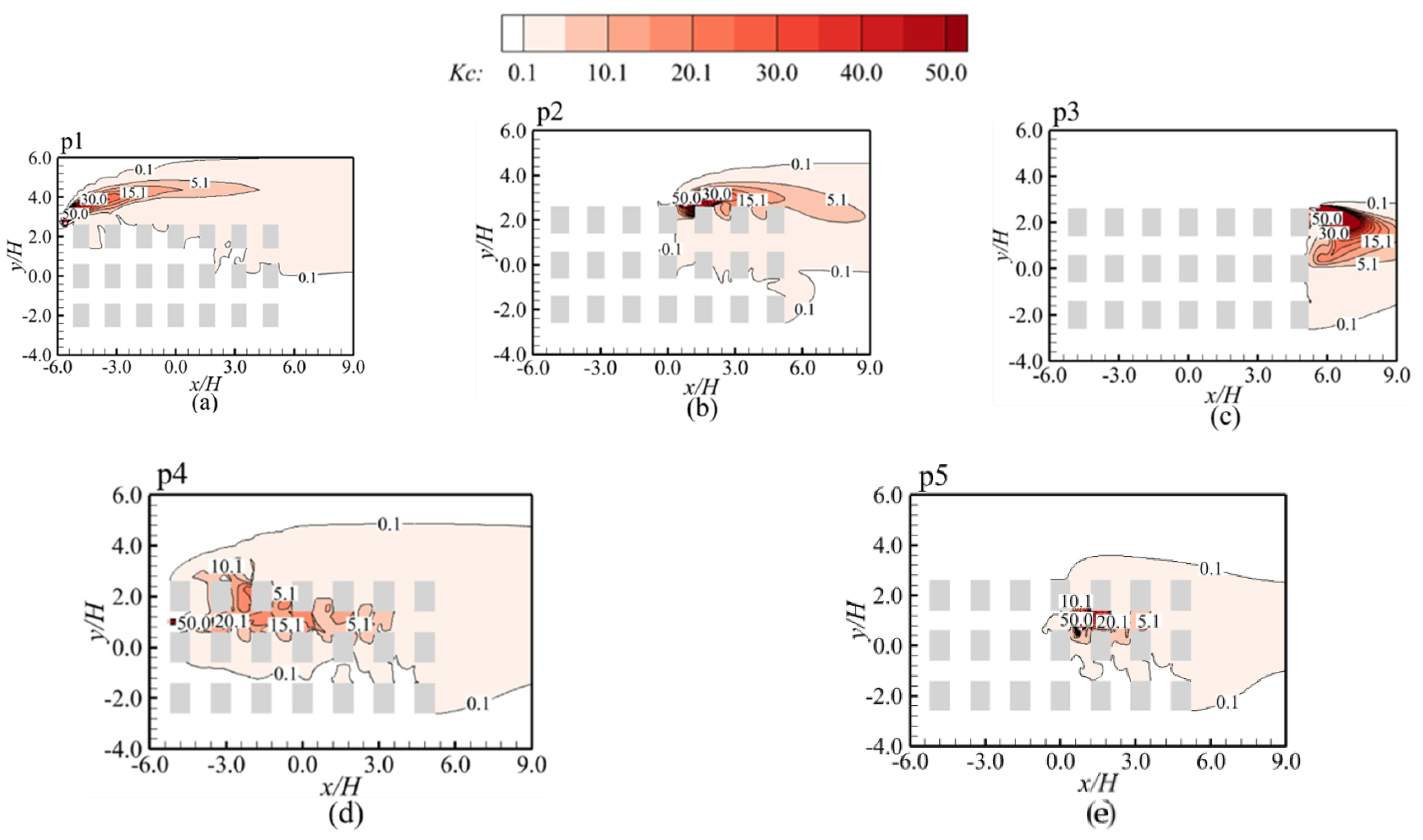
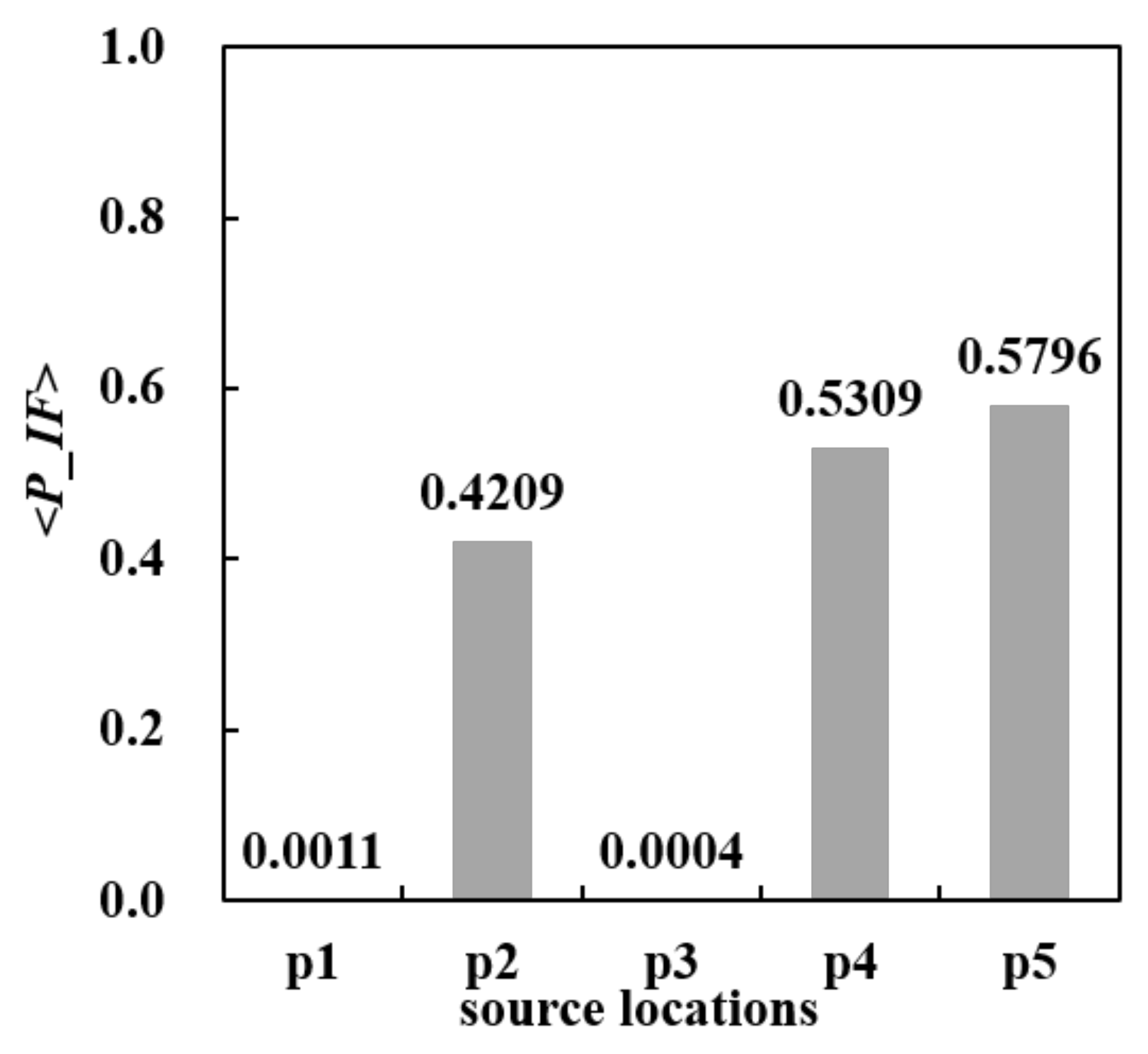
| Names of Boundary Conditions | Settings |
|---|---|
| Inlet wind velocity (m/s) | |
| Turbulence kinetic energy (m2/s2) | |
| Turbulence dissipation rate (m2/s3) | |
| Domain outlet | Pressure outlet |
| The top and the lateral boundaries of the domain | Symmetry boundary |
| Building surfaces | Non-slip for wall shear stress |
Publisher’s Note: MDPI stays neutral with regard to jurisdictional claims in published maps and institutional affiliations. |
© 2022 by the authors. Licensee MDPI, Basel, Switzerland. This article is an open access article distributed under the terms and conditions of the Creative Commons Attribution (CC BY) license (https://creativecommons.org/licenses/by/4.0/).
Share and Cite
Ma, C.; Liu, J.; Li, H.; Zhong, J. Impact Assessment of Waste Odor Source Locations on Pedestrian-Level Exposure Risk. Buildings 2022, 12, 528. https://doi.org/10.3390/buildings12050528
Ma C, Liu J, Li H, Zhong J. Impact Assessment of Waste Odor Source Locations on Pedestrian-Level Exposure Risk. Buildings. 2022; 12(5):528. https://doi.org/10.3390/buildings12050528
Chicago/Turabian StyleMa, Chenyu, Jianlin Liu, Hongyan Li, and Jiading Zhong. 2022. "Impact Assessment of Waste Odor Source Locations on Pedestrian-Level Exposure Risk" Buildings 12, no. 5: 528. https://doi.org/10.3390/buildings12050528






